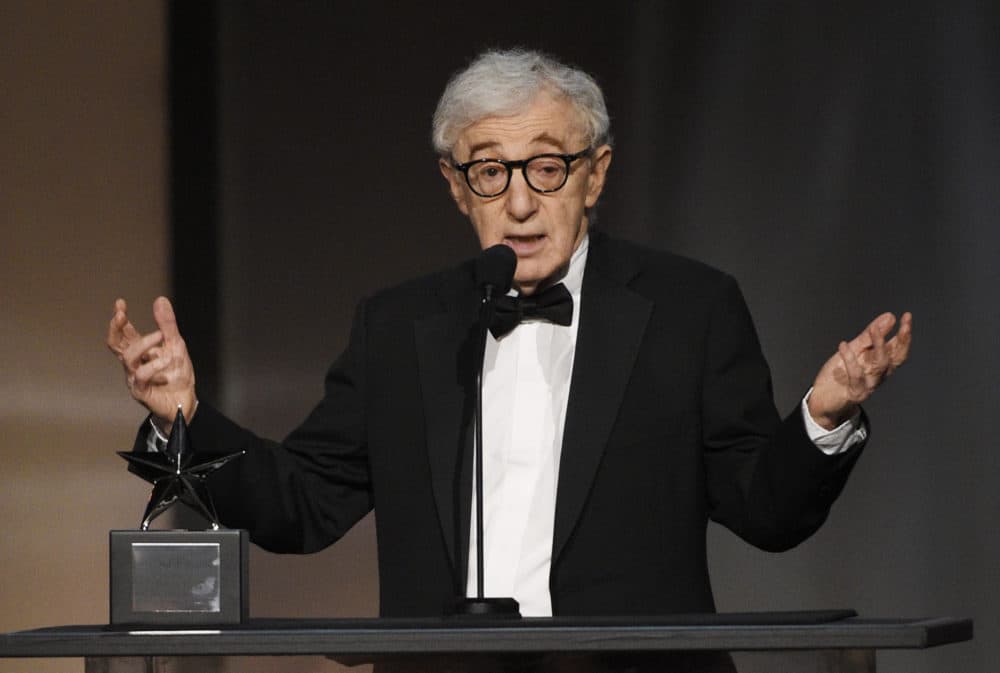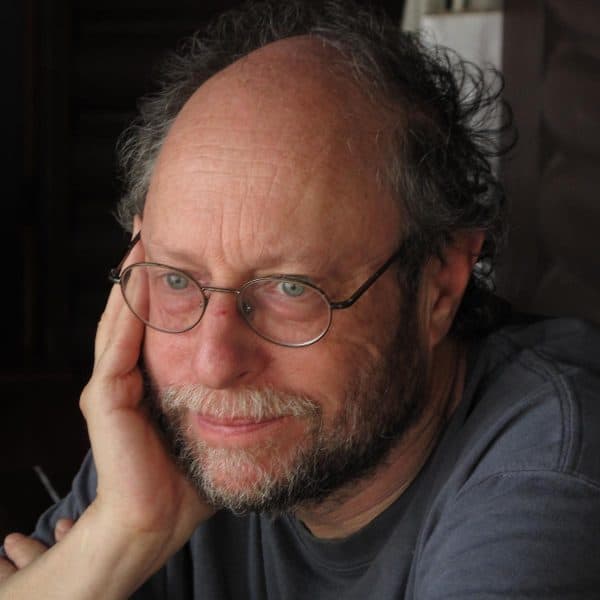Advertisement
Commentary
Censure The Artist, But Never Censor The Art

Want another take? Here's Maria Garcia's argument that we cannot separate art from the artists who created it.
You know what? I don’t believe in gravity anymore. I hear that Isaac Newton molested several young boys. And I don’t think that people should take penicillin or allow their kids to. Wait til you hear what Alexander Fleming, who discovered the antibiotic, did.
Well, no, not really. But let’s say those were facts, not fiction. Would we not say that it’s absolutely imperative in a civilized country to separate the science from the scientists?
You probably know where I’m going with this. It is as crucial to judge the work of an artist apart from the life of the artist as it is to separate the science from the scientists. Yes, scientists deal with facts and theories and artists deal with philosophies and aesthetics. But more importantly, artists, like scientists, deal with Truths with a capital T and are as indispensable as scientists in leading the species toward a higher understanding of what it means to live in the world.
It is as crucial to judge the work of an artist apart from the life of the artist as it is to separate the science from the scientists.
Art, Wynton Marsalis, once said, is what separates humans from animals. In a secular world where religion is increasingly unable to move us to a higher sphere, art is our path to the transcendent, to a sense of awe. It is also true, unfortunately, that great scientists and artists are sometimes not wonderful people. Let’s take Albert Einstein and Ludwig van Beethoven. Einstein, according to recent reports, was a racist and anything but a model husband and father.
Said his second wife, Elsa, "Such a genius should be irreproachable in every respect. But nature does not behave this way, where she gives extravagantly, she takes away extravagantly." Or put a less metaphysical way, those who go beyond boundaries in one area of life are more prone to go beyond boundaries in others.
But once the art has left the hands of the artist, it takes on a life of its own. Do we judge Caravaggio’s art by the fact he killed a man? William Burroughs’ writing by him killing his wife, which may or may not have been accidental? Ezra Pound’s poetry by his treasonous activities in support of Mussolini and Hitler? Why then would you judge any living artist by his or her sins?
It’s important to say at this point that breaking boundaries does not excuse despicable behavior. Anyone guilty of rape or murder should be in prison. While illegal behavior shouldn’t shield an artist or scientist from prosecution it should shield the art from censorship, the kind that would keep a movie director’s films off screen, a comedian’s work off a website or a writer’s novels off the shelves. As D.H. Lawrence said, “Never trust the teller, trust the tale. The proper function of a critic is to save the tale from the artist who created it.” I would say it’s also the proper function of people who run bookstores, movie theaters or television channels.
Advertisement
In contemporary terms, censure the artist, but never censor the art.
For the sake of argument, let’s say that in the course of Einstein’s womanizing, some of the women said he was a regular Roman Polanski in his actions with women. Well, we would certainly think less of Einstein as a human being, as many of us did when his racism was recently revealed, but would it change the truths we associate with relativity and gravitational fields?
We’ll get to contemporary artists shortly, but first you’re up, Ludwig. Beethoven wrested control of his nephew Karl from his mother after Beethoven’s brother died. He treated his sister-in-law like dirt. Karl tried to kill himself; as he was recovering from his bullet wound someone asked Karl why he did it. “Because,” he said, “my uncle harassed me so.”
Psychological harassment, to be sure, not physical harassment, but enough to qualify Beethoven for a #MeToo moment.
Says Beethoven’s excellent biographer, Jan Swafford of Tufts, “So much of what we know of Beethoven, we best forget when we come to his art. The limits and pettiness of humanity held up against the limitless in art were never more pointed as with him.” Swafford also implies that his psychological deviation was responsible for his genius as a composer.
Admittedly, part of the point of the argument against contemporary perpetrators is that people should boycott their art in order to make them suffer financially. Understandable. I don’t eat at places that support anti-abortion and right-wing causes.
But art isn’t hamburger. By boycotting the works of artists, you are implicitly saying that art is a lesser pursuit than science, that artistic truths are less important than scientific truths.
Although they may fill different needs, the truths of Beethoven’s Ninth are absolutely as important as the truths of gravity.
Although they may fill different needs, the truths of Beethoven’s Ninth are absolutely as important as the truths of gravity.
As Leonard Bernstein said in his legendary “Omnibus” program about all of Beethoven’s rewrites of Symphony No. 5 and what the results of those edits were: “It leaves [one] at the finish with the feeling that something is right in the world, that checks throughout, something that follows its own law consistently, something we can trust, that will never let us down.”
You want to give that up because Beethoven was often a jerk? That would be akin to the Catholic Church painting over the Sistine Chapel if they discovered letters proving Michelangelo was a practicing homosexual.
Bernstein, himself, is the subject of two excellent memoirs. In “On the Road and Off the Record with Leonard Bernstein,” former assistant Charlie Harmon accuses his boss of crotch-grabbing, which — he was later told by another aide — was par for the course for how Lenny probed the willingness of his assistants. And even daughter Jamie, in “Famous Father Girl,” virtually rolls her eyes at his sticking his tongue down unwilling throats — including hers.
For all his inappropriateness, neither memoirist even hints that the man called an “Exasperating Genius” in Harmon’s subtitle should be subject to anything akin to public censure, and certainly not his art.
But what of living artists? What are we to make of the likes of Bill Cosby, R. Kelly, Louis C.K. or Israel Horovitz? If none of these men have attained Beethovenian status, their work should still stand apart from what they’re alleged to have done. Granted, it’s difficult with Cosby since he tried to twin the personas of himself and Cliff Huxtable, the moral-center of a father he played on television. I would not be the right person to make a case for R. Kelly as an artist, but others have. But as with Cosby, it is harder to make a case for Kelly’s art when it so closely parallels his public persona.
Woody Allen’s "Manhattan" is cringe-worthy because it involves Allen playing someone involved with an under-age woman, but I have no problem watching “Crimes and Misdemeanors,” since it has nothing to do with under-age women. (Whether Dylan Farrow’s accusations of abuse or Allen’s denials are more credible is a subject for another day.)
And the attempts to rewrite history by removing Louis C.K. from websites like HBO or to rescind artistic-achievement awards given to abusers is straight out of a Soviet Union playbook. “They have sinned against public morality so they must become nonpersons.”
Roman Polanski, one of the great filmmakers of our time, is also a self-confessed statutory rapist. (There have been charges from other women as well.) As for the original case, forget the nuances for the moment — the prosecution team was guilty of its own malfeasance and the victim has argued that Polanski’s case be dropped.
Even if that weren’t the case, of all the abusers, Polanski is the one whose status as an artist remains the highest when you add up the critical acclaim, the Oscars and the depth of his art. The “truth” of his art is most obviously exemplified by “The Pianist” in which survival against the Nazis is measured not by Spielbergian heroism, but by street skills, contacts and dumb luck. And, not incidentally, by the power of art. The title character’s life is spared by a German Wehrmacht officer because of his ability to play Chopin’s Ballade in G Minor. And Polanski, as he had earlier in his career, found the perfect cinematic language with which to tell the story. Fortunately, the Academy voters of the time were sophisticated enough to separate the art from the artist and give Polanski the Academy Award for his direction. I don’t know that they would have the courage to do that today.
Polanski knew a thing or two about living on the run in an amoral universe between fleeing the Nazis as a boy and not being in the wrong place in the wrong time when Charles Manson’s family killed his wife, 8 months pregnant, and four other people. The sense of a world caught between Beckett and Kafka, violence and misogyny, political corruption and moral powerlessness is not a pretty picture of contemporary life, but Polanski made it as essential as the Big Bang theory (the scientific concept not the TV series). From “Knife in the Water” and “Cul-de-Sac” to “Rosemary’s Baby,” “The Tenant,” “Tess” and “Chinatown,” it’s hard to imagine a universe without Polanski’s films.
He deserved punishment, to be sure, but his banishment from Hollywood is not only his tragedy, but ours. I’m extremely uncomfortable with gatekeepers like the Brattle Theatre conflating artistic excellence and personal behavior. To quote Noam Dworman, owner of New York’s Comedy Cellar, who brought Louis C.K. back to the stage for an unannounced 15-minute set, “I think we’ll be better off as a society if we stop looking to the bottlenecks of distribution — Twitter, Netflix, Facebook or comedy clubs — to filter the world for us.” He might have added movie theaters and bookstores.
But the more we subject art to artists’ behavior, the weaker our spiritual world becomes, not the stronger. And the weaker our spiritual world becomes, the weaker our moral universe becomes as well.
The decision of Quill Books & Beverage in Westbrook, Maine, to pull books by Junot Díaz and others is as reprehensible as conservative librarians pulling books by people they deem to be “sinners.” As the widely-acclaimed, anti-ideology novelist and essayist Marilynne Robinson has said, “The Left does not understand the thinking of the Right because it is standing too close to have a clear view of it.”
Obviously, people are free to say that they can live very well, thank you, without “The Pianist” or Michael Jackson, or even Beethoven’s Ninth. But the more we subject art to artists’ behavior, the weaker our spiritual world becomes, not the stronger. And the weaker our spiritual world becomes, the weaker our moral universe becomes as well.
